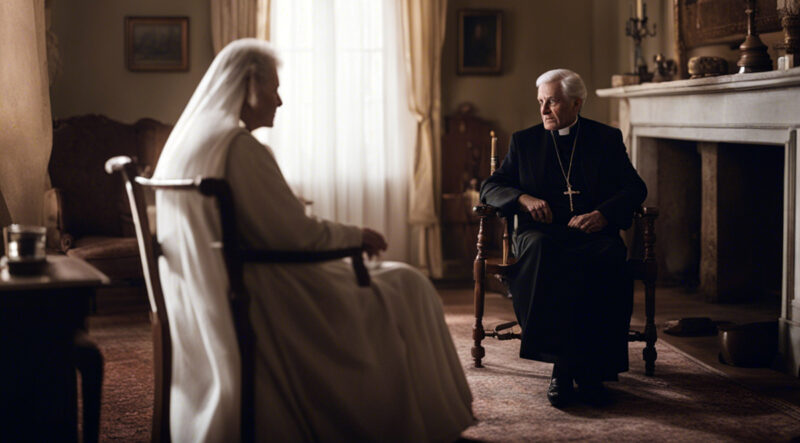June 13, 2014 — A quiet announcement from the Vatican slipped almost unnoticed through the headlines, but its impact was anything but small: for the first time, the Catholic Church officially acknowledged the existence of spirits — ghosts included.
What should have been a theological earthquake barely made a ripple.
Could it be that the Church acknowledged the event while trying to limit its spread? If so, why?
The answer lies in the act itself. If we take a moment to read and analyze it, the reasoning becomes obvious. The implications of the Vatican’s recognition of this Order of Exorcist Priests are far more significant than they first appear—not only for the paranormal community but also for the Catholic Church, the wider Christian community, and perhaps even for all religious communities.
Why is this important?
By officially recognizing an Order of Exorcists within the Vatican, the Church not only legitimized the order’s existence but also, by definition, confirmed the existence of demonic possession, its validity and the need for methods to address it. (Because if demons didn’t exist, why would there be an Order of Exorcists trained by the Vatican to perform exorcisms?)
Yet, what went largely unnoticed at the time was something even more groundbreaking: by recognizing demons, defined as evil spirits, the Church indirectly recognized the existence of spirits in general.
In other words, the Catholic Church officially confirmed the existence of ghosts. Actually. Officially. That should have been earth-shattering news — but strangely, it wasn’t treated that way.
Historically, the Catholic Church had no formal doctrine about ghosts, even though it had affirmed countless apparitions of deceased saints and their messages. (For example: the witch of Endor calling up the ghost of the prophet Samuel (1 Sam. 28:3–25); Judas Maccabeus meeting the ghost of Onias the high priest in a vision (2 Macc. 15:11–17); and in the Gospel of Matthew, the disciples seeing Moses and Elijah — both deceased — appear with Jesus on the Mount of Transfiguration (Matt. 17:1–9). Earlier still, the disciples mistook Jesus himself for a ghost (Matt. 14:26).)
If we break it down
By definition, a demon—the entity responsible for demonic possession—is an evil spirit (according to both the Merriam-Webster and Cambridge dictionaries).
Following that logic, if the Church recognizes the existence of evil spirits, it automatically recognizes the existence of spirits as a whole. (The word “evil” simply describes the spirit’s nature. And if evil spirits exist, there must also be spirits that are not evil—such as the Holy Spirit. Even if all spirits were considered evil, their existence would still be affirmed.)
Scripture supports this view: in the Old Testament, demons are referred to by terms such as שֵׁד (shed, “demon”), כוֹכָבִים (kokhavim, “stars”), שָׁמַיִם (shamayim, “heavenly ones”), and קְדֹשִׁים (kedoshim, “holy ones”). In the New Testament, demons are simply considered evil spirits—malevolent, invisible beings. (Interestingly, the pre-Christian meaning of “demon”—Latin daemon, Greek daimon—referred to a spirit or divine being, not necessarily something evil.)
In a strange twist of fate, the paranormal community might have accidentally received its strongest validation from one of its oldest and most powerful opponents.
The idea that paranormal belief and religious faith are incompatible is now, at least officially, outdated. Of course, this reconciliation hasn’t happened yet between the paranormal and science. But that may only be a matter of time — and a shift in mentality.
Faith vs. Science
Think about it: science brands the paranormal as “pseudo-science” because paranormal phenomena can’t be reliably recreated in laboratory conditions. (But how could they be? Paranormal interaction involves a living person and a deceased entity. To recreate it scientifically would require replicating death itself — and even then, no interaction would be guaranteed. After all, many of us have living neighbours we don’t interact with; the absence of communication doesn’t mean they don’t exist.)
Besides, many phenomena that can’t be recreated in a lab are still accepted without question.
The scientific community has acknowledged a rise in true events that are difficult or impossible to replicate, leading to what’s now called the Replication Crisis.
Examples include psychological results, historical events, the “spark of life” (abiogenesis — RNA has been replicated, but abiogenesis itself has not), and the Big Bang. (Scientists have recreated Big Bang matter, but not the Big Bang event itself.)
And let’s not forget: philosophy is recognized as a science (with “Doctor of Philosophy” degrees), even though it’s based purely on words and ideas rather than tangible evidence. Meanwhile, paranormal investigators gather EMF readings, temperature data, audio recordings, photos, videos, and even document physical interactions like touches and scratches. Hopefully, over time, the scientific community will recognize that serious paranormal researchers aren’t working against science — they’re approaching it with a cooperative mindset.
Anton J. Buchberger
Founder & Lead Investigator of Pandemonium Paranormal
Monthly Columnist for The Superstitious Times
Instagram @Pandemoniumantonj
Twitter @GacPandemonium
Let’s share some Paranormal Unity
Illustration by DeviantArt DreamUp

